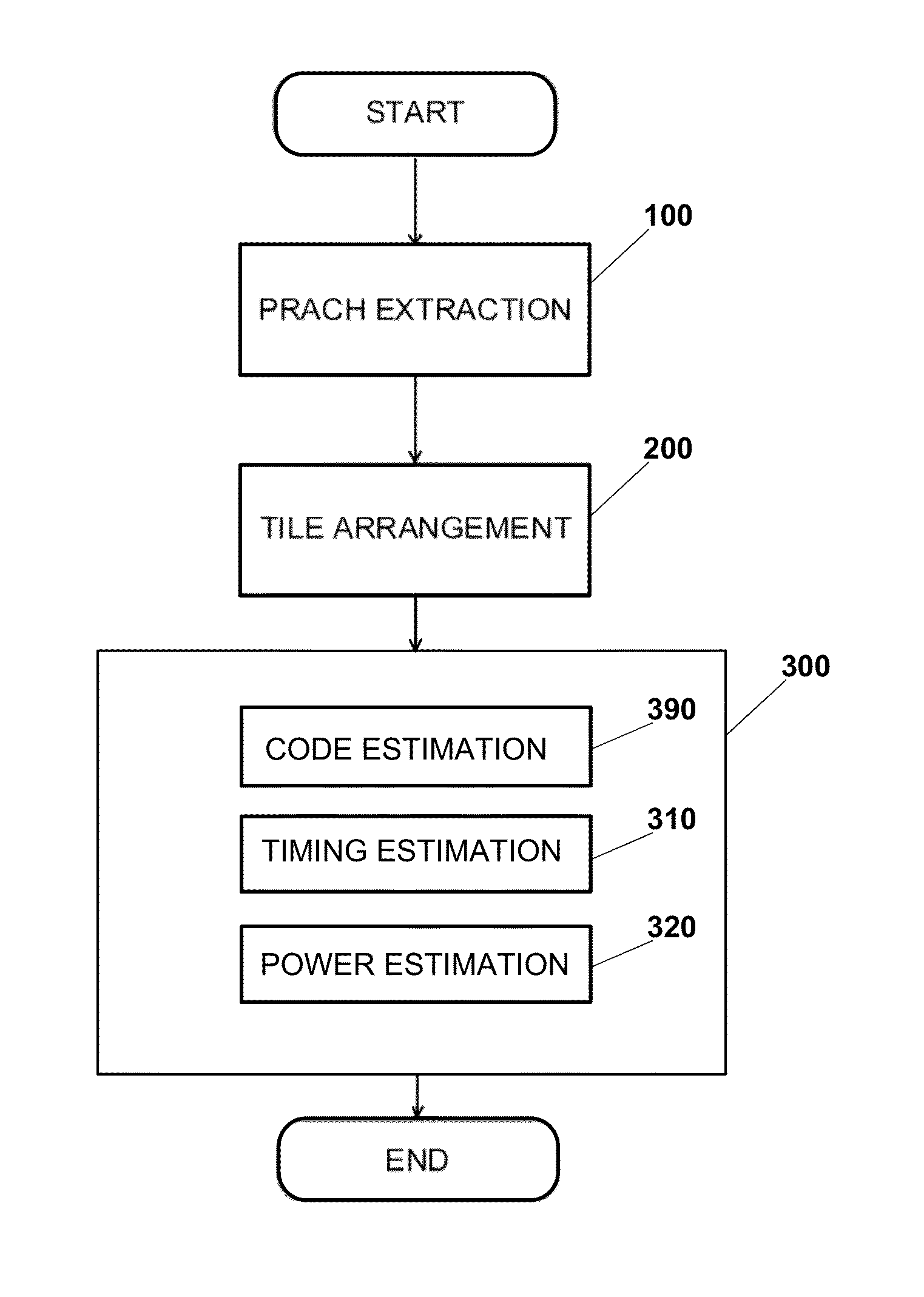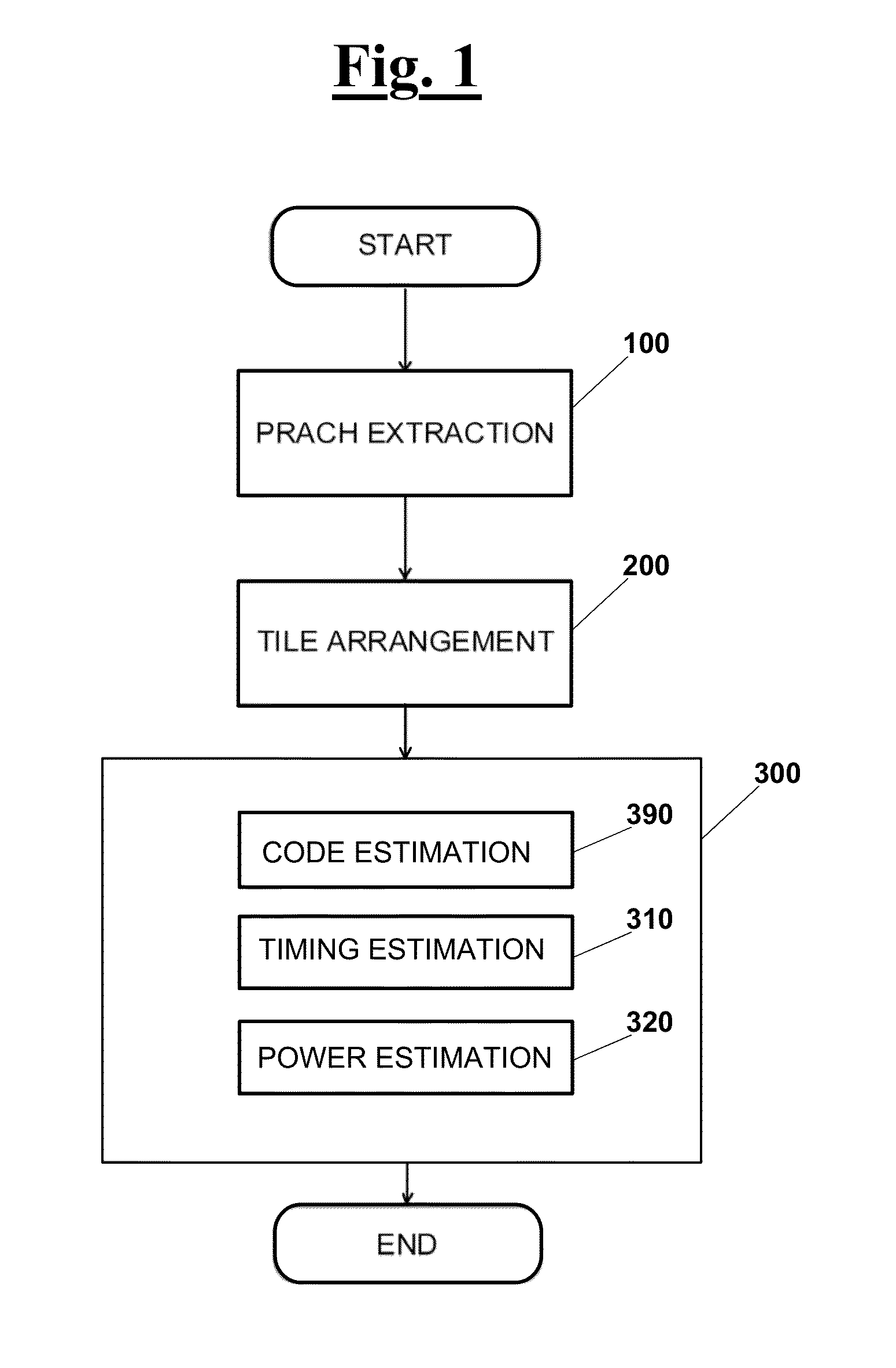Random access algorithm for LTE systems
a random access algorithm and lte technology, applied in the field of ra methods, can solve the problems of not being suited for multi-carrier systems, unable to apply to the zc sequence employed in lte, and the uplink signal is subject to users' specific propagation delays, so as to limit the loss of code orthogonality
- Summary
- Abstract
- Description
- Claims
- Application Information
AI Technical Summary
Benefits of technology
Problems solved by technology
Method used
Image
Examples
Embodiment Construction
[0064]With reference to FIG. 1 a method is described, according to the invention, for initial synchronisation between an eNodeB station (eNB) and a user equipment (UE) in a random access (RA) procedure in Long-Term Evolution (LTE) standards in wireless communication systems. The procedure according to the invention is carried out by the eNB at regular intervals, while constantly monitoring the signals coming from the cell, in which one or more user equipments may be notifying an entry request by a UE, by transmitting a random access code over a Physical Random Access Channel (PRACH). As know from the above standards, the RA code is randomly selected from a prefixed set of codes.
[0065]The method comprises a step 100 of extracting the PRACH at the eNB, i.e a step in which data are collected from the cell in the form of complex samples.
[0066]According to the invention a step 200 is provided of arranging, i.e, dividing, the PRACH into tiles, each tile of the tiles comprising a predeterm...
PUM
 Login to View More
Login to View More Abstract
Description
Claims
Application Information
 Login to View More
Login to View More - R&D
- Intellectual Property
- Life Sciences
- Materials
- Tech Scout
- Unparalleled Data Quality
- Higher Quality Content
- 60% Fewer Hallucinations
Browse by: Latest US Patents, China's latest patents, Technical Efficacy Thesaurus, Application Domain, Technology Topic, Popular Technical Reports.
© 2025 PatSnap. All rights reserved.Legal|Privacy policy|Modern Slavery Act Transparency Statement|Sitemap|About US| Contact US: help@patsnap.com



